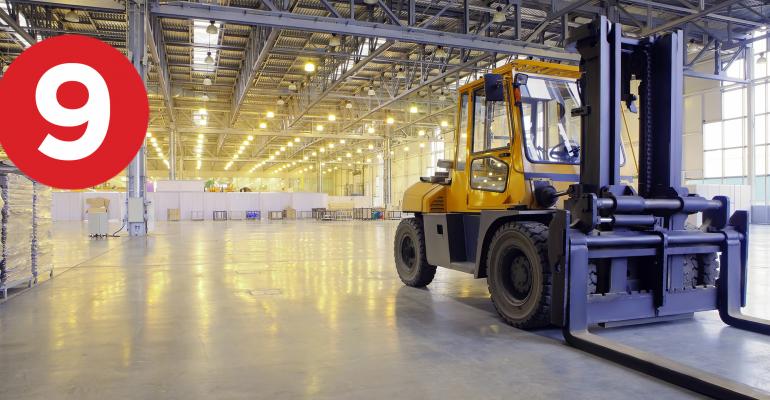- U.S. Companies Face Hurdles in Moving Production Closer to Home “Companies looking to make their supply chains more resilient with nearshoring strategies may only be bringing production problems closer to home, experts say. U.S. importers who are studying shifting their sourcing from the Asia-Pacific region to Mexico and deeper into Latin America are finding it tougher to find suppliers with the right raw materials, production quality and networks for getting their own components that have been established in manufacturing hubs like China and Southeast Asia. Reproducing that capacity and re-creating clusters of suppliers under a nearshoring strategy will take years, experts say.” (The Wall Street Journal)
- When Will Investors Bulk at High Prices, Low Cap Rates? “Treasury rates are rising rapidly with the 10-Year treasury currently at 2.72% and up substantially from the pandemic low of .65% two years ago. A conundrum in this CRE market is that cap rates so far, have not increased to reflect the increase in the risk-free rate of the 10-Year Treasury note, which is used as the base rate for cap rates. Instead of rising, cap rates have compressed further, especially for apartment and industrial properties.” (GlobeSt.com)
- Biden to Require U.S.-Made Steel, Iron for Infrastructure “The Biden administration is taking a key step toward ensuring that federal dollars will support U.S. manufacturing — issuing requirements for how projects funded by the $1 trillion bipartisan infrastructure package source their construction material. New guidance issued Monday requires that the material purchased — whether it’s for a bridge, a highway, a water pipe or broadband internet — be produced in the U.S. However, the rules also set up a process to waive those requirements in case there are not enough domestic producers or the material costs too much, with the goal of issuing fewer waivers over time as U.S. manufacturing capacity increases.” (The Associated Press)
- Nursing Homes Shut Down, Close Wings Amid COVID-19 Staffing Crunch “Like many nursing homes in urban and rural pockets of America, Eliza Bryant Village has struggled to maintain operations during the COVID-19 pandemic. Costs are too high and reimbursement isn't enough. The home loses more than $100 each day for every resident covered by Medicaid, which represents about 95% of the home's population.” (USA Today)
- What Office Landlords Spend on Amenities to Draw Tenants “At the start of the pandemic property owners were spending on HVAC systems, cleaning supplies and signs directing people away from high-touch surfaces and each other. Today it’s the more unconventional amenities’ time to shine — doggie day cares, beehives, grab-and-go cafes and golf simulators among them. But the perk gold rush comes at a price — and a high one for full-floor amenity spaces.” (Commercial Observer)
- Wawa Plans to Double Store Footprint “Wawa Inc. is thinking big. The convenience-store retailer is plotting the “most aggressive growth" in its history, with plans to nearly double its footprint during the next 10 years, reported the Philadelphia Business Journal. Wawa currently operates approximately 965 stores throughout Pennsylvania, New Jersey, Maryland, Virginia, Florida and Washington, D.C.” (Chain Store Age)
- Big Sky Medical Launches $1B JV to Acquire MOBs “Big Sky Medical has formed a joint venture with an institutional investor to create a medical office portfolio worth $1 billion. Newmark facilitated the formation of the partnership between the Dallas-based company and the off-shore institutional investor that’s new to the sector. The joint venture will target medical office buildings across the U.S. and was seeded by a more than $400 million medical office portfolio that Big Sky Medical had been aggregating for the past 12 months.” (Commercial Property Executive)
- Largest Hotel Operator Aimbridge Seeks to Broaden Scope “As the largest third-party hotel management company, that sounds counterintuitive, but company executives say with its scale and size, some owners think Aimbridge can't offer personalized attention, and that’s a mindset the company intends to change. Even with a portfolio of more than 1,500 hotels domestically and internationally, there’s still room for Aimbridge to grow, President and CEO Mike Deitemeyer said. Hotel brands are expanding with tens of thousands of new units, indicating a lot of potential and opportunity, and Aimbridge is a long way from a density that would create obstacles for further growth, he said.” (CoStar.com)
- How a Lone Tenant Is Holding Up a $70 Million Condo Deal “For 15 years, he has lived in the same apartment — a one-bedroom with an enviable private deck on the top floor of a building on the Upper West Side. So when a developer, the Naftali Group, bought the Manhattan building for $70 million last June and told tenants that they had to move, Mr. Ozsu made plans to stay. He could not be swayed with a buyout offer of $30,000, an eviction notice or even a $25 million lawsuit that Naftali recently filed against him. In April, the new landlord placed an industrial air filter outside Mr. Ozsu’s door, and the blower has been droning nonstop, driving him and his 13-year-old boxer-mix, Penelope, up the wall.” (The New York Times)
0 comments
Hide comments





